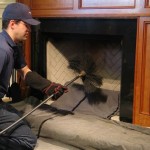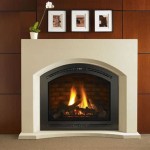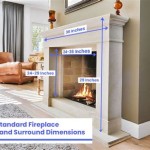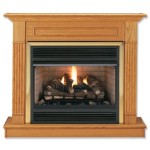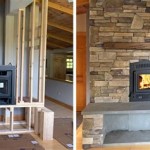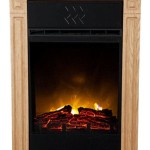Updating a Brick Fireplace: Enhancing Aesthetics and Functionality
A brick fireplace can be a significant architectural feature in a home, offering warmth, ambiance, and a focal point for living spaces. However, over time, the style may become outdated, suffer from wear and tear, or simply no longer align with the current homeowner's aesthetic preferences. Updating a brick fireplace presents a versatile opportunity to revitalize the room and create a more contemporary or personalized space. The process encompasses various approaches, from simple cosmetic improvements to more extensive renovations.
Before undertaking any fireplace update, a thorough assessment of the existing structure is crucial. This includes inspecting the brickwork for cracks, crumbling mortar, and any signs of water damage. Addressing structural issues is paramount before proceeding with cosmetic upgrades, as neglecting these problems can lead to more significant and costly repairs down the line. A professional chimney sweep should also inspect the chimney flue for blockages and ensure proper ventilation to maintain safe operation. Following the assessment, careful planning and material selection are essential for achieving the desired outcome.
Addressing Aesthetic Concerns: Paint and Whitewash
One of the most common and relatively straightforward methods for updating a brick fireplace involves painting or whitewashing the brick. This approach can dramatically transform the look of the fireplace without requiring extensive demolition or construction. Painting the brick offers a wide range of color options, allowing homeowners to coordinate the fireplace with the room's overall color scheme. A neutral color, such as white, gray, or beige, can create a clean and modern look, while bolder colors can introduce a statement piece. Choosing the right paint is crucial for achieving a durable and aesthetically pleasing result. A masonry primer should be applied first to ensure proper adhesion and prevent moisture from being absorbed into the brick. A high-quality latex or acrylic paint specifically designed for masonry is recommended for the topcoat, as these paints are breathable and resistant to cracking and peeling.
Whitewashing, on the other hand, offers a more subtle and textured effect. This technique involves diluting paint with water and applying it to the brick, allowing some of the brick's natural color and texture to show through. Whitewashing can create a rustic, farmhouse-inspired aesthetic or a soft, muted backdrop for other decorative elements. The level of dilution can be adjusted to achieve the desired opacity. A similar preparation process is involved, with cleaning the brick and applying a masonry primer often recommended to optimize adhesion.
Regardless of whether painting or whitewashing, proper surface preparation is key. This includes cleaning the brick thoroughly to remove any dirt, grime, or soot. A wire brush and a solution of trisodium phosphate (TSP) can be used to scrub the brick, followed by a thorough rinsing with clean water. Any loose or crumbling mortar should be repaired before painting or whitewashing. Additionally, protecting the surrounding area with drop cloths and painter's tape will help prevent unwanted paint splatters.
Revamping the Hearth and Mantel
The hearth and mantel are distinct elements of a fireplace that can be updated independently or in conjunction with the brick surround. The hearth, the non-combustible area in front of the fireplace opening, serves both a functional and aesthetic purpose. Common hearth materials include brick, stone, tile, and concrete. Replacing an outdated hearth with a more modern material can significantly enhance the fireplace's overall look. For instance, a traditional brick hearth can be replaced with a sleek slab of granite or a decorative tile pattern. The choice of material should complement the rest of the room's design and consider its durability and heat resistance.
Similarly, the mantel provides an opportunity to express personal style and create a focal point above the fireplace. An existing wooden mantel can be stained or painted to match the room's decor, or it can be replaced with a more elaborate or minimalist design. Options range from rustic reclaimed wood beams to sleek contemporary shelves. A new mantel can also incorporate built-in storage or display space, adding functionality to the fireplace area. When installing a new mantel, it is important to ensure it is properly secured to the wall and adheres to any local building codes regarding clearances from the firebox opening. Furthermore, consider materials of low combustibility for safety.
Refacing the existing hearth with new materials is a popular option for budget-conscious homeowners. Tile is a versatile and cost-effective choice, offering a wide range of styles, colors, and patterns. Natural stone veneers provide a more luxurious and durable alternative. Installing new hearth materials typically involves removing the old surface, preparing the subfloor, and applying the new material with appropriate adhesives and grout.
Modernizing with Inserts and Fireplace Surrounds
For a more comprehensive update, consider installing a fireplace insert or redesigning the entire fireplace surround. A fireplace insert is a self-contained heating unit that fits into an existing fireplace opening. Inserts are available in various fuel types, including wood, gas, and electric, and they offer improved energy efficiency and heating performance compared to traditional open fireplaces. Installing a fireplace insert can significantly enhance the functionality of the fireplace while also updating its appearance.
Redesigning the fireplace surround involves creating a new facade around the existing fireplace opening. This can involve removing the existing brickwork and replacing it with new materials, such as stone, tile, wood, or metal. A custom-designed fireplace surround can completely transform the look of the fireplace, creating a unique and personalized focal point for the room. This option offers the greatest flexibility in terms of design and material selection, but it also requires more extensive construction and may involve working with a contractor or designer.
When choosing a fireplace insert or redesigning the surround, consider the architectural style of the home and the desired aesthetic. A modern home might benefit from a sleek, minimalist surround with clean lines, while a traditional home might call for a more ornate design with intricate details. Consider the scale of the room and the proportion of the fireplace to ensure the updated design is harmonious with the overall space.

How To Update A Brick Fireplace Homemade Ginger

16 Red Brick Fireplace Makeover Ideas

How To Paint A Brick Fireplace 1950 S House Update

Brick Fireplace Makeover Before And After Ideas Cool Makeovers Remodel Home

25 Beautiful Diy Brick Fireplace Makeovers

Brick Fireplace Makeover Pine And Prospect Home
How To Update A Brick Fireplace With Chalk Paint Diy Beautify Creating Beauty At Home

Diy Painted Brick Fireplace Makeover On A Budget Before After The Confused Millennial

16 Red Brick Fireplace Makeover Ideas

Mortar Wash Brick Fireplace Makeover Dimples And Tangles


